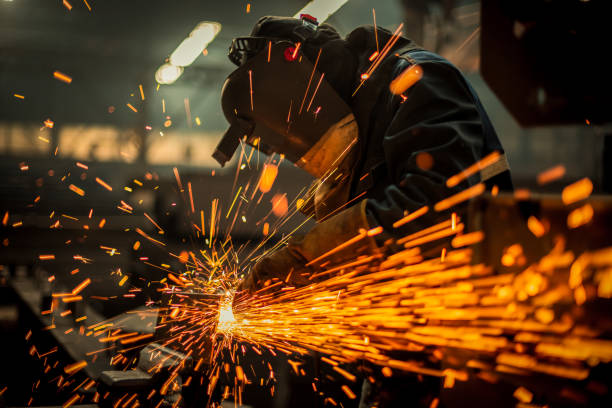Mining requires the help of a steel fabricator to ensure that all machinery and equipment operates smoothly. However, to fully understand the job of these professionals, it’s important to know the many roles they can fill.

Steel Fabrication as a Whole
Steel fabricators turn steel sections into useable parts or materials. These professionals often work with steel drafters and detailers. Drafters and detailers are responsible for creating designs and drawings that are passed on to the fabricator.
The fabricator will take these drawings and “bring them to life.”
However, steel fabrication requires an immense amount of skill and expertise because:
- Plans and drawings are filled with fine details necessary for components to work properly
- Multiple tools and techniques are needed to adapt steel to the mine’s needs
- Steel has multiple properties, and the fabricator must master these properties to complete designs
While the mine may need the steel components, they’re not made on-site. It’s the role of the fabricator to ensure that when parts are shipped, they’re precise so that they work with the current systems flawlessly.
If the fabricator doesn’t pay attention to detail or makes a small mistake, this can mean machinery or part failure. The position is one that requires both master craftsmanship as well as a master of reading drawings and plans.
Steel Fabricator Manipulation Techniques
Manipulating steel is a lot more complex than most non-professionals realise. Depending on the part’s purpose, the fabricator may opt to use the following techniques:
- Bending: Bending is a technique that is used to create modern construction equipment. Roll benders are a prime example of a method that allows the fabricator to develop specific arcs and shapes. Press braking may also be used to manufacture long steel pieces that are greater than 12 metres.
- Coating: Corrosion is a major concern with steel and metals. Fabricators use coating techniques that slow or stop corrosion. For example, galvanisation may be placed on the steel as a coating to prevent corrosion and reduce the risk of part failure.
- Cutting: Steel needs to be cut to meet size and shape specifications. Multiple steel cutting techniques may be used to cut the metal properly.
- Shot Blasting: Imperfections in steel can lead to weaker products and even failure. Shot blasting is a technique that removes impurities. The process can also be used to offer a clear finish that’s easier to weld together. For piping and tanks, shot blasting is a leading technique.
- Welding: Fusing parts and components together is an essential duty of a steel fabricator. These professionals are master welders that can create and repair component and system joins so that they can withstand the intense usage in mines.
Mining companies often hire teams of steel fabricators due to the industry’s usage of specialised equipment. The fabricator can help make mines more efficient, and they can also help with everything from platform creation to creating beams and columns and even helping with boiler systems.
The role of a steel fabricator is one of the most important in the mining industry and enables mine operators to remain efficient and operational.
